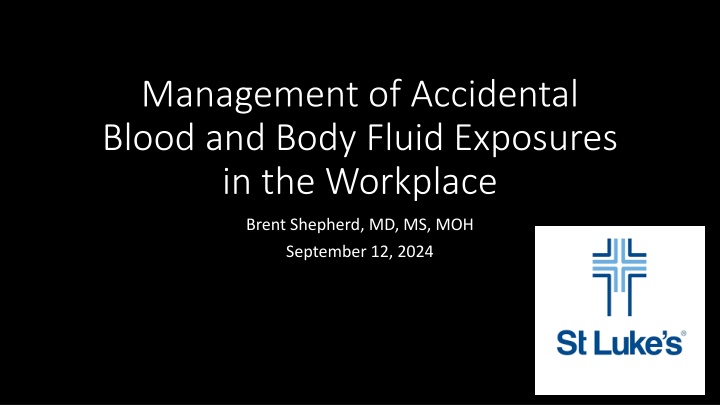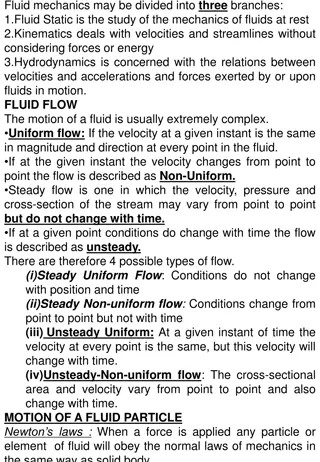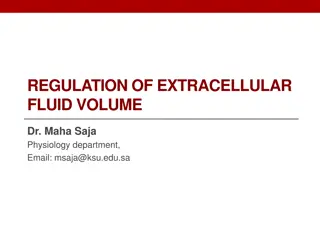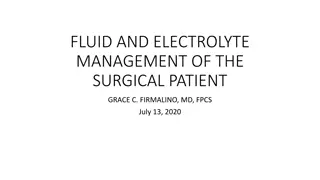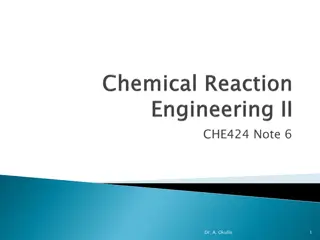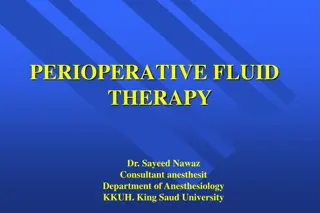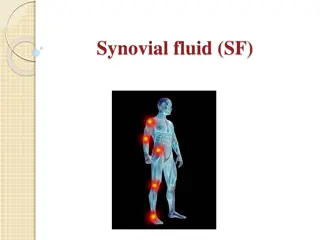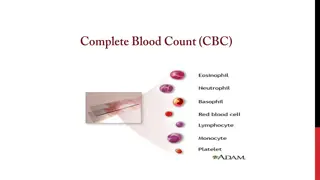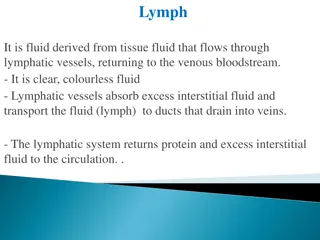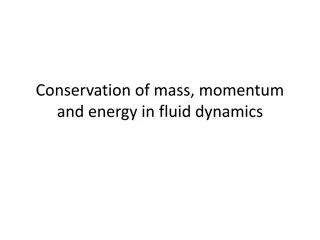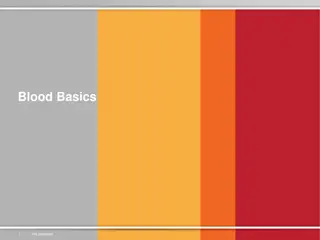Preventing Workplace Blood and Body Fluid Exposures
Accidental exposure to blood and body fluids poses significant risks in the workplace, particularly in healthcare settings. This article discusses the management of such exposures, the scope of risks involved, background incidence rates, and timelines for bloodborne pathogens such as Hepatitis B, Hepatitis C, and HIV. It covers preventive measures, historical developments, and current challenges in dealing with these infectious diseases.
Download Presentation

Please find below an Image/Link to download the presentation.
The content on the website is provided AS IS for your information and personal use only. It may not be sold, licensed, or shared on other websites without obtaining consent from the author.If you encounter any issues during the download, it is possible that the publisher has removed the file from their server.
You are allowed to download the files provided on this website for personal or commercial use, subject to the condition that they are used lawfully. All files are the property of their respective owners.
The content on the website is provided AS IS for your information and personal use only. It may not be sold, licensed, or shared on other websites without obtaining consent from the author.
E N D
Presentation Transcript
Management of Accidental Blood and Body Fluid Exposures in the Workplace Brent Shepherd, MD, MS, MOH September 12, 2024
Scope Exposures can be numerous Inhalational Dermal Percutaneous Ingestion
Scope Exposures can be numerous Inhalational Dermal Percutaneous Ingestion
Background Incidence based on 2022 meta-analysis: Global estimates for occupational exposure to blood and body fluids among healthcare workers during their career was 56.6%. Annual exposure was 39.0%. At least 20 bloodborne pathogens are known to cause diseases; 3 are the main pathogens of concern (OSHA bloodborne pathogen standards) Hepatitis B and C, HIV
Hepatitis B Timeline 1965: Researchers discovered the hepatitis B surface antigen 1970s: further discovery and understanding of hepatitis B virus made 1983: hepatitis B vaccine 1991: Interferon-alpha treatment approved for chronic hep B Significant side effects 1998 onward: other medicines developed Slows development of cirrhosis, halts progression of liver disease, and decreases hepatocellular carcinoma incidence. Can cost ~$10k/year or more From 1983 (just after HBV vaccine was introduced) to 2010, acute HBV infections among HCP declined from an estimated 17,000 to 263. 70% of adults self-reported they were unvaccinated as of 2018.
Hepatitis C Timeline Although known previously as non-A, non-B hepatitis, it was officially discovered in 1989 First treatment: IFN-alpha2b Frequent and numerous side effects, high relapse rate 2011: direct-acting antiviral agents discovered and approved for HCV treatment 2013-14: once daily oral, 8-12 week direct-acting antiviral treatments developed Fewer side effects. Original price was $160k Pharmaceutical costs alone for treatment of HCV infection costs between $22k to $95k or more (goodrx.com, June 2024) Incidence of acute HCV infection increasing, primarily due to IV drug use.
HIV Timeline 1981: first cases of atypical disease outbreaks identified, all found to have weakened immune systems (Acquired Immune Deficiency Syndrome, or AIDS). 1984: HIV virus discovered that causes AIDS 1987: FDA approves the first medication to treat AIDS: zidovudine, a nucleotide reverse transcriptase inhibitor (NRTI) 1990: US Public Health Service releases statement managing occupational exposure to HIV, including use of post-exposure prophylaxis. 1994-1996: AIDS is #1 cause of death for all Americans ages 25-44 1995: FDA approves the first protease inhibitor to treat AIDS. With it comes drug resistance. As of 2023, nearly 50 medicines to treat HIV have been FDA approved. Although vaccine development has been researched extensively since the HIV virus discovery, no vaccine exists CDC: lifetime treatment cost of an HIV infection is estimated at $379,668 (in 2010 dollars) $540,392 in 2024 dollars (from CPI Inflation Calculator, bls.gov)
OSHA Timeline 1991: OSHA released the Bloodborne Pathogens standard designed to protect workers from bloodborne pathogens. This includes Annual education/training to workers Providing hepatitis B vaccination to employees Providing adequate/appropriate PPE to employees 96% of dentist offices using disposable gloves prior to this standard. Establish post-exposure evaluation and follow-up plans. 2000: Standard revised to include the Needlestick Safety and Prevention Act Gave greater guidance on sharps protocol Employers required to use safer medical devices (safe needles, needleless devices) and maintain a sharps injury log.
Hepatitis B: Characteristics Liver infection caused by hepatitis B virus (HBV). Can be acute (< 6 months) or chronic Acute: most often in adults (>95%) Chronic: most often in infants and children Symptoms can range from asymptomatic to severe, and usually appear between 1-4 months after infection Abdominal pain Dark urine Fevers Joint pain Nausea/vomiting Weakness/fatigue Jaundice (yellowing of the skin and eyes)
Hepatitis B: Characteristics Chronic hepatitis B One of the leading causes of death around the world ~50 million new global infections annually 15-40% of individuals with chronic hepatitis B will have serious sequelae (liver failure, liver cancer) in their lifetime. Multiple markers exist to help determine acuity/chronicity of HBV infection and infectious nature Positive HBV surface antigen (HBsAg) indicates active infection Positive antibody to HBV surface antigen (anti-HBs) indicates resolved infection or immunity. Remainder of markers outside scope of this lecture. Vaccine, but no cure.
Hepatitis C: Characteristics Liver infection caused by the hepatitis C virus (HCV). Symptoms of acute infection are rare Jaundice Fatigue Nausea Fevers Muscle aches About 25-45% of individuals clear an HCV infection on their own. The rest develop a chronic infection.
Hepatitis C: Characteristics Chronic infection can lead to serious liver damage with associated symptoms Bleeding/bruising easily Fatigue Loss of appetite Jaundice Itchy skin Swelling in the legs, stomach Weight loss Confusion No vaccine. Cure available, but expensive.
Hepatitis C: Characteristics RNA can be identified in serum two weeks after exposure in almost all patients. Liver enzyme markers become elevated soon afterward, reaching maximum 8-12 weeks after exposure. Anti-HCV antibodies begin to develop usually around from around the time of maximum liver enzyme levels up to six months after infection. Some patients may never develop antibodies if viral clearance occurs before their development.
HIV: Characteristics Virus damages immune system so body can t fight infection and disease as easily When immune system is weak enough, infected individuals can develop Acquired Immunodeficiency Syndrome (AIDS) Symptoms: Some get a flu-like illness 2-4 weeks after virus enters body Fevers, headache, muscle aches/joint pain, rash, sore throat, etc. As HIV progresses to AIDS, infected individuals get more diseases with their associated symptoms. No vaccine, no cure.
Disease Prevention General Guidelines in the occupational setting: Personal Protective Equipment Proper use, handling, and disposal of sharps
Prevention: HBV Hepatitis B vaccination Vaccines are safe and effective Most frequent side effects of pain at injection site and temperature > 99.9 (same as placebo). No increase in adverse events for additional vaccine doses in non-responders. Contraindicated for persons with history of hypersensitivity to yeast or any vaccine component, or with a history of serious adverse event to previous HBV vaccine dose. Vaccination recommended for unvaccinated or incompletely vaccinated workers. Serologic testing recommended 1-2 months after final dose of vaccine to document immunity. Post-exposure prophylaxis: Hepatitis B Immune Globulin (HBIG)
Prevention: HCV No vaccine exists
Prevention: HIV Post-exposure prophylaxis. No vaccine exists.
Transmission Risk Factors Source patient s infectious status and viral load Body fluid type to which worker was exposed Route of exposure Amount of blood and/or body fluid transferred to worker during exposure Duration of time outside source patient s body prior to exposure Worker s immune status
Transmission Risk Factors Source patient s infectious status and viral load Higher viral load = greater risk of infection
Transmission Risk Factors Body fluid type to which worker was exposed Infectious: - Blood - Cerebrospinal fluid - Synovial fluid - Pleural fluid - Peritoneal fluid - Pericardial fluid - Amniotic fluid - Semen* - Vaginal secretions* Not considered infectious: - Bile - Feces - Nasopharyngeal washings - Sweat - Saliva - Tears - Sputum - Urine - Vomitus
Transmission Risk Factors Route of exposure Inhalational Dermal Percutaneous Ingestion
Transmission Risk Factors Amount of blood and/or body fluid transferred to worker during exposure Larger quantities (e.g. hollow bore needle) inherently more risky than smaller quantities
Transmission Risk Factors Duration of time outside source patient s body prior to exposure HBV: days. Survival on surfaces has been documented for at least 7 days. HCV: weeks. Highly infectious even up to six weeks after drying on surfaces. HIV: hours. Dried HIV positive blood reduces transmission risk to near-zero
Transmission Risk Factors Worker s immune status HBV vaccinated and immune? No risk of infection. HCV formerly infected and with HCV antibodies? Reinfection possible HIV Some rare genetic variants (CCR5, inhibits binding of virus to cell) have demonstrated resistance and possible immunity to HIV despite continuous exposure.
Transmission Risk: Numbers Numbers/percentages are only estimates All of the previously-listed factors affect transmission risk.
Transmission Risk: Numbers Hepatitis B Fully immunized with adequate antibodies: 0%. Non-immunized: anywhere from 23-62%
Transmission Risk: Numbers Hepatitis C 2017 publication estimated that percutaneous exposure is around 0.2% transmission rate (prior estimates stated about 1.8%) Mucocutaneous exposure transmission risk is closer to 0%.
Transmission Risk: Numbers HIV Risk of 0.3% transmission per percutaneous exposure to HIV-infected blood. 0.09% risk of transmission after mucous membrane exposure to HIV-infected blood. Other exposures: unknown, but considered to be less (e.g. non-intact skin, other body fluids) Increased risk with source patients with terminal illness. Higher viral load greater likelihood of infection.
Postexposure Prophylaxis: HBV Hepatitis B immune globulin (HBIG) Provides passive anti-HBs and temporary (3-6 months) protection. Prepared from human plasma with known high titers of anti-HBs. Can be administered with HBV vaccine but at a different injection site. Not contraindicated for pregnant or lactating women.
Postexposure Prophylaxis: HCV Not recommended High number needed to treat, even for percutaneous exposure, and potential side effects Difficult to adequately power the studies and, therefore, duration has not been established Treatment for HCV is highly effective.
Postexposure Prophylaxis: HIV 4-week regimen consisting of at least 3 antiviral medicines Although not 100% effective, observational research suggests that PEP can reduce risk of getting HIV by more than 80% when taken correctly. Can be poorly tolerated Monitor for drug toxicity by testing at baseline and at 2 weeks after starting PEP.
Universal management guidelines Wash affected area with soap and water Test source patient, if available, as soon as possible and preferably with in 48 hours of exposure.
CDC Management Guidelines: Hepatitis B Different recommendations depending on immunization status: Vaccinated with documented anti-HBs > 10 mIU/mL Vaccinated without documented anti-HBs > 10 mIU/mL Vaccinated with documented anti-HBs < 10 mIU/mL after first complete vaccine series Vaccinated with documented anti-Hbs < 10 mIU/mL after two complete vaccine series (i.e. non-responders) Unvaccinated, incomplete vaccination, or unable to provide documentation of vaccination
CDC Management Guidelines: Hepatitis B If worker is vaccinated with anti-HBs > 10 mIU/mL No further testing or treatment for Hepatitis B is necessary.
CDC Management Guidelines: Hepatitis B If worker has completed vaccine series but without documented anti- HBs > 10 mIU/mL: Immediately test worker anti-HBs levels and proceed according to result.
CDC Management Guidelines: Hepatitis B Vaccinated with documented anti-HBs < 10 mIU/mL after first complete vaccine series: If source positive for HBsAg or unknown: 1 dose of HBIG and repeat vaccination series, with testing for anti-HBs 1-2 months after last dose of vaccine to assure adequate response. Obtain total anti-HBc initially, then HBsAg and total anti-HBc at 6 months. Refrain from donating blood, plasma, organs, tissue or semen. No need to modify sexual practices or refrain from becoming pregnant, or discontinue breastfeeding. If source negative: give one additional vaccine dose, followed by repeat anti- HBs testing 1-2 months later. If still < 10, complete vaccine series and again check anti-HBs 1-2 months after last dose.
CDC Management Guidelines: Hepatitis B For vaccinated workers with anti-HBs < 10 mIU/mL after two separate vaccine series (i.e. nonresponders): If source positive for HBsAg or unknown: 2 HBIG doses: first ASAP after exposure, and 2nd one month later.
CDC Management Guidelines: Hepatitis B For workers with lack of vaccine documentation, unvaccinated or incompletely vaccinated (including vaccine refusal): Don t test anti-HBs levels, as this can be misleading. If source positive or HBsAg unknown: 1 dose of HBIG and HBV vaccine ASAP. Complete vaccine series according to vaccination schedule. Get anti-HBs 1-2 months after last dose of vaccine (and at least 6 months after HBIG). If source negative: complete HBV vaccine series according to schedule. Test anti-HBs 1-2 months after completion. If anti-HBs 10: considered immune, no further testing necessary. If anti-HBs < 10: complete a 2nd vaccination series, followed by repeat anti-HBs testing 1-2 months after completion of series. If < 10 after revaccination, test for HBsAg and anti-HBc to determine infection status. If not infected, the worker is determined a nonresponder and susceptible to HBV infection.
CDC Management Guidelines: HCV Test source patient As soon as possible (preferably within 48 hours) after exposure Preferred: HCV RNA Can also test for anti-HCV and, if positive, reflex to HCV RNA. Positive source patients should be reported to local health department and referred for clinical management. If positive source or source HCV status unknown: Baseline testing for anti-HCV with reflex testing for HCV RNA if positive ASAP and preferably within 48 hours HCV RNA positive: refer for pre-existing HCV infection. Anti-HCV positive but negative for HCV RNA: follow-up testing should be done for HCV RNA alone. Testing for HCV at 3-6 weeks after exposure. On average, HCV RNA is detectable within 1 week after exposure, and most will be detectable within 1-2 weeks. Additional follow-up testing at 4-6 months for anti-HCV with reflex Due to possibility of intermittent periods of aviremia during acute HCV infection. Anti-HCV seroconversion occurs, on average, 8-11 weeks after exposure May be even later among immunosuppressed individuals.
CDC Management Guidelines: HIV Discuss PEP Because the great majority of occupational HIV exposures do not result in transmission of HIV, the potential benefits and risks of PEP (including the potential for severe toxicity and drug interactions, such as may occur with oral contraceptives, H2-receptor antagonists, and proton pump inhibitors, among many other agents) must be considered carefully when prescribing PEP. PEP is not justified for exposures that pose a negligible risk for transmission.
CDC Management Guidelines: HIV Discuss PEP 4 week regimen consisting of at least 3 antiviral medicines Newer agents are tolerated better Anti-emetics, anti-spasmodics can help with side effects and improve adherence. Consider interactions with other medicines (e.g. oral contraceptives, H2-receptor antagonists, PPIs) Limited data on its use with pregnant women. Discuss risks/benefits. Can decrease transmission risk to infants Infant toxicity appears minimal, especially with short 4-week course Don t wait for source patient labs before starting; discontinue if source patient negative. Begin within 72 hours of exposure, preferably within hours. Monitor for drug toxicity by testing at baseline and at 2 weeks after starting PEP. Complete blood count, renal and hepatic function at minimum. Side effects: evaluate promptly. Offer PEP even with undetectable HIV viral load in HIV positive patients (low but possible risk)
CDC Management Guidelines: HIV Follow-up eval within 72 hours of exposure Gives opportunity to ask questions about exposure and, if indicated, PEP Ensures that continued treatment with PEP is indicated and improves adherence Manage symptoms/side effects more appropriately Improves likelihood of follow-up serologic testing. Calm anxiety around exposure. Barrier contraception, avoid blood/tissue donations, pregnancy, breastfeeding (if possible) to prevent secondary transmission, especially during first 6-12 weeks post-exposure. Post-exposure testing 6 weeks, 12 weeks, 6 months after exposure 4th generation HIV Ag/Ab combination immunoassays allow for earlier detection and testing can be concluded at 4 months if used. 12-month follow-up recommended for workers infected with HCV after exposure to source co-infected with both HIV, HCV. Occupationally acquired HIV infection should be reported to state health department and to CDC Cases of Public Health Importance (COPHI) coordinator
Risk Risk and risk tolerance among healthcare providers
